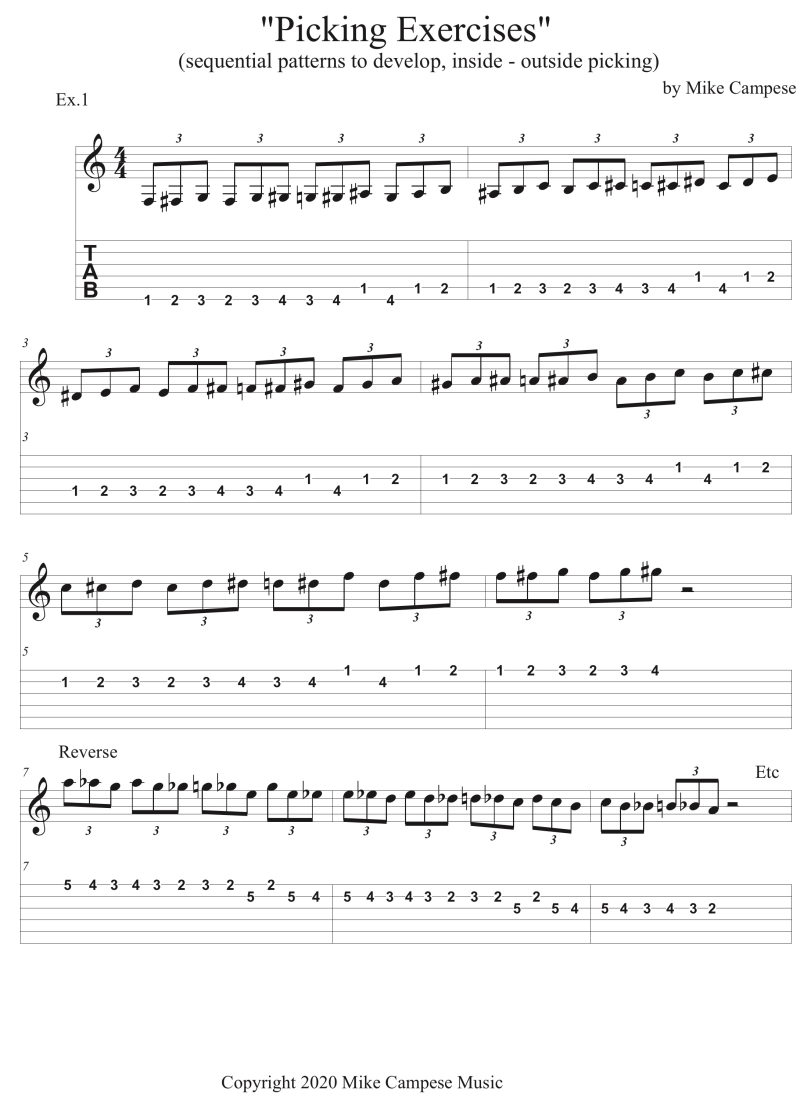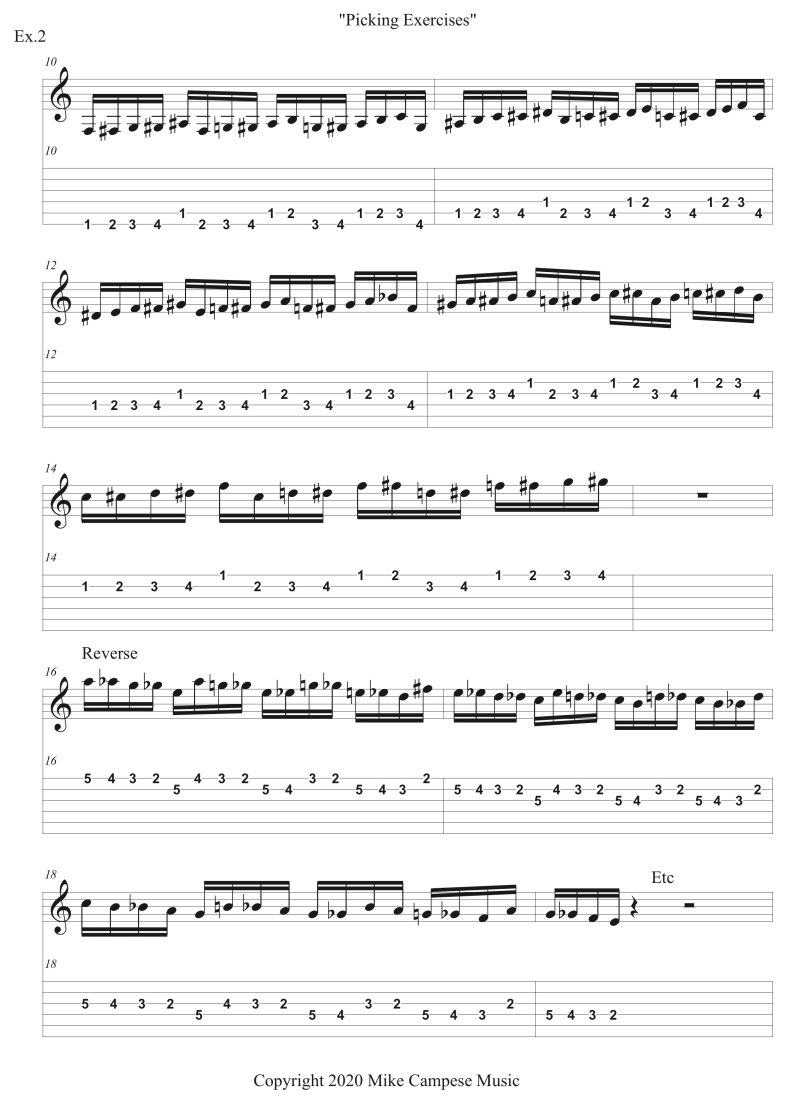Welcome back! In this lesson I will be showing you some exercises that will really help your picking. These examples will help develop your downstrokes as well as your upstrokes. Instead of just one exercise for each picking motion, the picking direction alternates in these exercises. I have also done lessons on inside and outside picking in previous lessons.
A common issue among guitarists is that their upstrokes are not as strong as their downstrokes. It is most common to start with a downstroke and then an upstroke. The issue can occur when crossing strings - if you are playing an upstroke to a downstroke from a lower to a higher string, your pick can get hung up between the 2 strings when you are picking inside. This makes sense, because there is less space between the 2 strings as if you are outside the 2 strings. There is a lot more we can talk about this.
A great way to work on this is to play your lines or exercises starting with an upstroke and then a downstroke as well. You will notice the accents will fall on an upstroke.
The following examples will help develop these areas. The chromatic exercises may not sound musical, but don't worry. The patterns are mainly for getting warmed up and to focus on your picking. You can apply this concept to any scale or line too. I just gave you a couple for now, be sure to expand this concept.
Example 1 is a 3-note sequence in the classic, 1-2-3-4 quasi-chromatic pattern that is a great warm up. This pattern is built in triplets and it begins on the 1st fret, 6th string. Continue this same sequence up to the 12th fret and back. I only wrote it out in the first 4 frets and the first few bars descending = continue this pattern over the entire neck. Be sure to alternate pick this whole example, starting with a downstroke and then an upstroke. Then reverse the picking, starting with an upstroke and then a downstroke. Also, the left hand fingering is just 1, 2, 3, 4 - keep this throughout the exercise.
MP3 - Connecting Scales - Example 1
Example 2 is another 4-note sequence in the quasi-chromatic, 1-2-3-4 pattern. It is common to just play the quasi-chromatic pattern starting with a downstroke and then an upstroke, as well as reversing the picking etc. This exercise strengthens your downstroke and upstroke at the same time, because your picking will reverse while you are playing through it. Try starting this with an upstroke as well and be sure to use a metronome to keep it even.
MP3 - Connecting Scales - Example 2


That is it for now! Be sure to make up your own examples and visit www.mikecampese.com for more information.
Mike Campese is an all-around music performer, session artist and teacher competent in many musical styles, electric and acoustic. He has studied at G.I.T. (Honors Graduate), and with Paul Gilbert, Norman Brown, Stanley Jordan, Scott Henderson and Keith Wyatt.